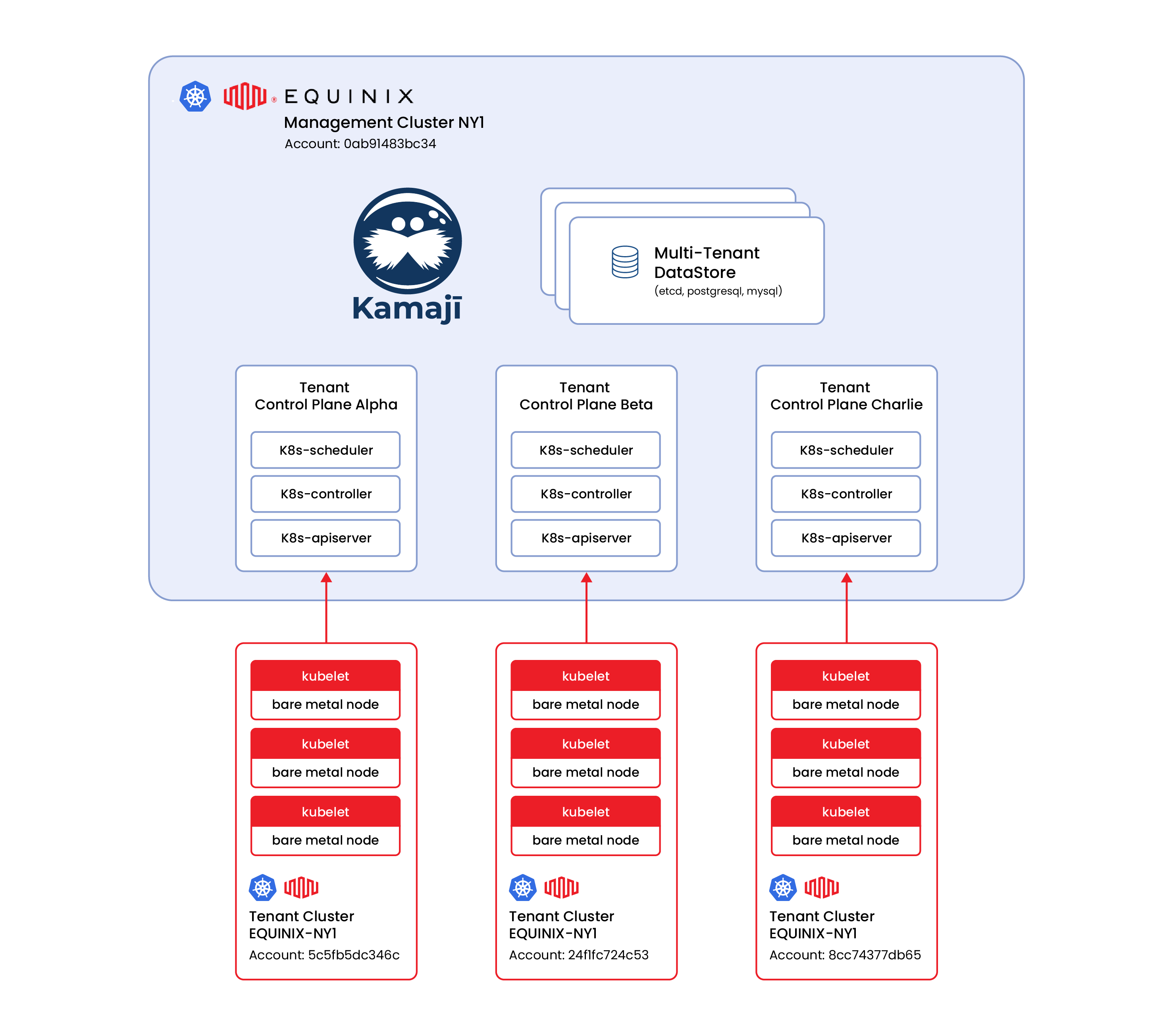Optimizing Kubernetes on Equinix: A Dive into Bare Metal, Kamaji, and the Cluster API
Kubernetes on bare metal maximizes performance by eliminating virtualization overhead, providing direct access to physical hardware resources. This minimizes latency, optimizes resource utilization, and ensures consistent, high-speed communication between containers, making it an ideal choice for performance-critical workloads.


In the ever-evolving landscape of container orchestration, Kubernetes has emerged as the go-to solution for managing containerized applications. When it comes to hosting Kubernetes, the choice of infrastructure plays a crucial role in determining performance, scalability, and cost efficiency. This blog post explores the benefits and challenges of deploying Kubernetes on bare metal servers, particularly within the Equinix environment.
The Power of Bare Metal Servers
One of the key advantages of deploying Kubernetes on bare metal servers is the raw performance and resource control it provides. Unlike virtualized environments, bare metal servers eliminate the overhead associated with hypervisors, offering direct access to hardware resources. This translates to enhanced performance and reduced latency, making it an ideal choice for resource-intensive applications.
Equinix Metal, formerly known as Packet, is a bare metal cloud provider that offers dedicated physical servers on-demand, providing a unique infrastructure solution for various workloads, including Kubernetes clusters. What sets Equinix Metal apart is its focus on delivering raw, high-performance computing resources directly to users.
Bare metal servers and the Kubernetes Control Plane tax
A Kubernetes cluster consists of two main components: the control plane and the worker nodes. The control plane, also known as the master node, is the brain of the Kubernetes cluster, responsible for managing and orchestrating containerized applications across the cluster.
However, it's essential to acknowledge that the Control Plane, a critical component of Kubernetes responsible for managing and orchestrating cluster operations, can incur considerable costs when hosted on bare metal instances. The main consideration relies on etcd, the key/value distributed store holding the Kubernetes objects state, which is based on the raft algorithm which requires 3 instances to support maximum one failure: the minimum availability requirement for a production-grade setup.
With stricter availability tolerances, such as two failures, the amount of Control Plane nodes must increase up to 5, bringing more costs on the control plane nodes which, when running a fleet of clusters, can be really cumbersome from the financial takeaway.
Thus, the challenge lies in finding a balance between the performance benefits of bare metal and the potential financial implications of running the Control Plane on such infrastructure.
Introducing Kamaji: Revolutionizing Kubernetes Control Plane
Enter Kamaji, a groundbreaking solution that reimagines the traditional approach to hosting the Kubernetes Control Plane thanks to the Hosted Control Plane approach. Instead of relying on dedicated bare metal servers for the Control Plane, Kamaji runs the Control Plane components as regular pods within a Kubernetes cluster, named Management Cluster. This as-a-service approach not only optimizes resource utilization but also provides a more flexible and scalable solution for running clusters at scale.

Kamaji's architecture decouples the Control Plane from dedicated infrastructure, enabling it to scale horizontally alongside the application workloads. This not only improves efficiency but also mitigates the financial burden associated with provisioning and maintaining a fleet of bare metal servers exclusively for the Control Plane.
The Role of Kubernetes Cluster API with Kamaji and Equinix
To further enhance the manageability and efficiency of Kubernetes on Equinix, the Kubernetes Cluster API project comes into play. The Cluster API, combined with the Kamaji and Equinix provider, offers a comprehensive solution for deploying and managing clusters at scale.
By leveraging the Kubernetes Cluster API, teams can automate the provisioning, upgrading, and scaling of Kubernetes clusters across multiple Equinix bare metal servers. This not only streamlines cluster operations but also optimizes resource allocation, minimizing costs associated with idle or underutilized infrastructure.
Kamaji perfectly integrates with the Cluster API project, and the Kamaji Control Plane provider for Cluster API developed by CLASTIX provides a comprehensive step-by-step tutorial on how to take full avantage of Equinix's metal servers and Kamaji's hosted control planes.
Conclusion
In conclusion, the synergy between bare metal servers, Kamaji, and the Kubernetes Cluster API presents a compelling solution for organizations seeking high-performance, scalable, and cost-effective Kubernetes deployments on Equinix infrastructure. This innovative approach not only addresses the challenges of hosting the Control Plane on bare metal but also paves the way for a more efficient and scalable Kubernetes ecosystem.